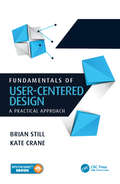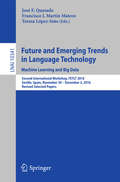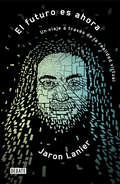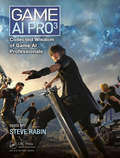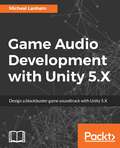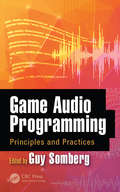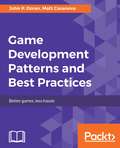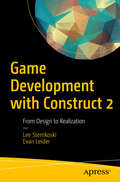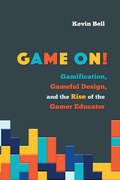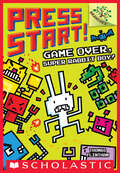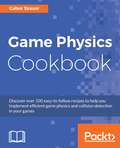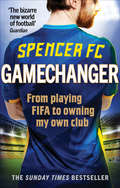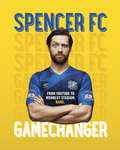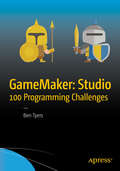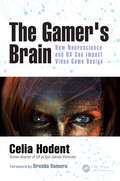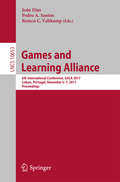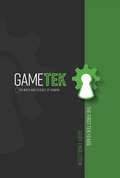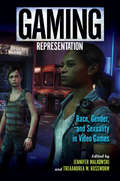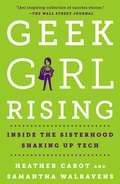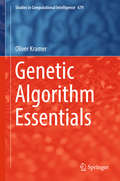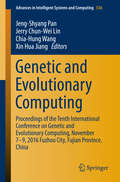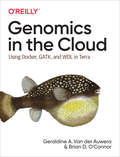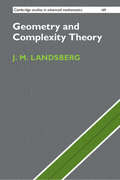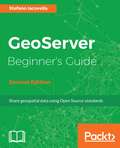- Table View
- List View
Fundamentals of User-Centered Design: A Practical Approach
by Brian Still Kate CraneThere has been some solid work done in the area of User-Centered Design (UCD) over the last few years. What’s been missing is an in-depth, comprehensive textbook that connects UCD to usability and User Experience (UX) principles and practices. This new textbook discusses a theoretical framework in relation to other design theories. It provides a repeatable, practical process for implementation, offering numerous examples, methods, and case studies for support, and it emphasizes best practices in specific environments, including mobile and web applications, print products, as well as hardware.
Future and Emerging Trends in Language Technology. Machine Learning and Big Data: Second International Workshop, FETLT 2016, Seville, Spain, November 30 –December 2, 2016, Revised Selected Papers (Lecture Notes in Computer Science #10341)
by Teresa López Soto Francisco-Jesús Martín Mateos José F QuesadaThis book constitutes revised selected papers from the Second International Workshop on Future and Emerging Trends in Language Technology, FETLT 2016, which took place in Seville, Spain, in November 2016. The 10 full papers and 5 position papers presented in this volume were carefully reviewed and selected from 18 submissions. In 2016 the conference focused on Machine Learning and Big Data.
Future Intelligent Vehicular Technologies: First International Conference, Future 5V 2016, Porto, Portugal, September 15, 2016, Revised Selected Papers (Lecture Notes of the Institute for Computer Sciences, Social Informatics and Telecommunications Engineering #185)
by Joaquim Ferreira Muhammad AlamThis book constitutes the refereed proceedings of the First International Conference on Future Intelligent Vehicular Technologies, Future 5V 2016, held in Porto, Portugal, in September 2016. Future 5V presents vehicular networks and communications and also hosted the “Internet of Things (IoT) meets Big Data and Cloud Computing Workshop”. The 21 revised full papers presented were reviewed and selected from 38 submissions. The papers cover all aspects of intelligent vehicular communications including security and applications.
El futuro es ahora: Un viaje a través de la realidad virtual
by Jaron LanierEl padre de la realidad virtual nos explica sus infinitas posibilidades a través de su experiencia con la tecnología. A través del fascinante recorrido de una vida dedicada a la tecnología, Jaron Lanier expone la capacidad de la realidad virtual para iluminar y amplificar la comprensión que tenemos de nuestra especie y ofrece a los lectores una nueva perspectiva sobre cómo el cerebro y el cuerpo humano se conectan al mundo. Al entender la realidad virtual como una aventura tanto científica como cultural, Lanier demuestra el componente humanístico que esta aporta a la tecnología. Si bien sus libros anteriores ofrecían una visión más crítica de las redes sociales y de otras manifestaciones de la tecnología, en El futuro es ahora el autor argumenta que la realidad virtual puede hacer que nuestra vida sea más rica y más completa. Una obra que no solo nos muestra qué significa ser humano en esta era de posibilidades tecnológicas sin precedentes, sino que también une la dimensión tecnológica con nuestra experiencia corporal. Reseñas:«Una historia maravillosa, profundamente humana y sumamente personal.»Dave Eggers «Es el padre de la realidad virtual y un genio de la tecnología punta.»Sunday Times «Una mente tan ilimitada como internet.»Evening Standard «Íntimo e idiosincrásico [...] peculiar y fascinante [...] La vívida imaginación de Lanier se convierte en un personaje más. Su visión es humanista e insiste en que el objetivo más importante del desarrollo de la realidad virtual debe ser la conexión humana.»The New York Times Book Review «Una lectura esencial, no solo para los conocedores de la realidad virtual, sino para cualquiera interesado en comprender cómo la sociedad ha llegado a convertirse en lo que es hoy en día y en qué podría convertirse en un futuro no tan lejano.»The Economist «Brillante e inspirador.»Publishers Weekly
Game AI Pro 3: Collected Wisdom of Game AI Professionals
by Steve RabinGame AI Pro3: Collected Wisdom of Game AI Professionals presents state-of-the-art tips, tricks, and techniques drawn from developers of shipped commercial games as well as some of the best-known academics in the field. This book acts as a toolbox of proven techniques coupled with the newest advances in game AI. These techniques can be applied to almost any game and include topics such as behavior trees, utility theory, path planning, character behavior, and tactical reasoning. KEY FEATURES Contains 42 chapters from 50 of the game industry’s top developers and researchers. Provides real-life case studies of game AI in published commercial games. Covers a wide range of AI in games, with topics applicable to almost any game. Includes downloadable demos and/or source code, available at http://www.gameaipro.com SECTION EDITORS Neil Kirby General Wisdom Alex Champandard Architecture Nathan Sturtevant Movement and Pathfinding Damian Isla Character Behavior Kevin Dill Tactics and Strategy; Odds and Ends
Game Audio Development with Unity 5.X
by Micheal LanhamCreate �AAA' quality game audio with new features and tools built for Unity About This Book • Explore the basics of audio development in Unity to create spatial sound, mixing, effects, composition, adaptive audio and more. • Leverage the Audio Mixer of Unity 5.x to create blockbuster sound and music for your game. • Learn about developing professional audio for games with FMOD Studio and composing original music with Reaper. • Build amazing audio synchronized graphic visualizations with Unity. • Understand how real-time character lip syncing can be implemented. Who This Book Is For The ideal target audience for this book will be game developers, both Indie as well as semi pro. No prior knowledge of Unity and audio development is assumed, What You Will Learn • Develop game audio and other audio effects with Unity • Getting familiar with the new Audio Mixer introduced in Unity 5 • Implement dynamic and adaptive audio using various tools and strategies • Explore interesting ways to incorporate audio into a game with sound visualization • Use 3rd party professional audio development tools like FMOD • Compose original music and record vocals • Understand and troubleshoot audio performance issues In Detail Game Audio is one of the key components in making a game successful and it is quite popular in the gaming industry. So if you are a game developer with an eye on capturing the gamer market then this book is the right solution for you. In this book, we will take you through a step by step journey which will teach you to implement original and engaging soundtracks and SFX with Unity 5.x. You will be firstly introduced to the basics of game audio and sound development in Unity. After going through the core topics of audio development: audio sources, spatial sound, mixing, effects, and more; you will then have the option of delving deeper into more advanced topics like dynamic and adaptive audio. You will also learn to develop dynamic and adaptive audio using the Unity Audio Mixer. Further, you will learn how professional third party tools like FMOD are used for audio development in Unity. You will then go through the creation of sound visualization techniques and creating your own original music using the simple yet powerful audio workstation Reaper. Lastly, you will go through tips, techniques and strategies to help you optimize game audio performance or troubleshoot issues. At the end of the book, you'll have gained the skills to implement professional sound and music. Along with a good base knowledge audio and music principles you can apply across a range of other game development tools. Style and approach This book will have a step by step practical approach where downloadable free games will be given with the book and readers will be free to work with them.
Game Audio Programming: Principles and Practices
by Guy SombergWelcome to Game Audio Programming: Principles and Practices! This book is the first of its kind: an entire book dedicated to the art of game audio programming. With over fifteen chapters written by some of the top game audio programmers and sound designers in the industry, this book contains more knowledge and wisdom about game audio programming than any other volume in history. One of the goals of this book is to raise the general level of game audio programming expertise, so it is written in a manner that is accessible to beginners, while still providing valuable content for more advanced game audio programmers. Each chapter contains techniques that the authors have used in shipping games, with plenty of code examples and diagrams. There are chapters on the fundamentals of audio representation and perception; advanced usage of several different audio middleware platforms (Audiokinetic Wwise, CRI ADX2, and FMOD Studio); advanced topics including Open Sound Control, Vector-Based Amplitude Panning, and Dynamic Game Data; and more! Whether you’re an audio programmer looking for new techniques, an up-and-coming game developer looking for an area to focus on, or just the one who got saddled with the audio code, this book has something for you. Cutting-edge advanced game audio programming concepts, with examples from real games and audio engines Includes perspectives of both audio programmers and sound designers on working and communicating together Coverage not just on game audio engine design, but also on implementing audio tools and working with sound designers providing a comprehensive perspective on being an audio programmer
Game Development Patterns & Best Practices
by John P. DoranIf you are a game developer who wants to solve commonly-encountered issues or have some way to communicate to other developers in a standardized format, then this book is for you. Knowledge of basic game programming principles and C++ programming is assumed.
Game Development with Construct 2
by Lee Stemkoski Evan LeiderDesign and create video games using Construct 2. No prior experience is required. Game Development with Construct 2 teaches you to create 12 different game projects from a variety of genres, including car racing and tower defense to platformer and action-adventure. The software is user friendly and powerful, and the games you create can be exported to run on the web, desktop computers, and smartphones. What You'll Learn Create complete functional games using the Construct 2 game engine Understand general logical structures underlying video game programs Use practical game design advice (such as visual feedback and gameplay balancing) Understand programming concepts useful throughout computer science Who This Book Is For Middle school and high school students with no prior programming knowledge, and only minimal mathematical knowledge (graphing (x,y) coordinates, measuring angles, and applying formulas)
Game On!: Gamification, Gameful Design, and the Rise of the Gamer Educator (Tech.edu: A Hopkins Series on Education and Technology)
by Kevin BellHelping teachers take advantage of game design principles and intrinsic motivators to build more effective courses.The changing student body in American higher education demands a new approach to teaching, one that moves toward inclusive, hyperpersonalized learning environments that have much in common with games and social media. Kevin Bell’s Game On! presents dynamic case studies of gamer educators and game-derived techniques to help instructors creatively formulate their own teaching strategies. Breaking gamefully designed classes into their component parts, Bell analyzes what these classes are actually doing and explains why they work. He offers faculty a rubric to assess their own courses for their propensity to engage students, particularly those from low socioeconomic and high-risk populations. Bell explores how game design, pedagogy, and intrinsic motivators can level the playing field to produce rigorous learning environments that are as addictive to all participants as the latest apps and social media systems. He also discusses best practices, lays out the broader context of computer-mediated teaching and learning, and considers the challenges and opportunities that gamification presents.Instructors would do well to consider the key tenets of successful games if they are to engage and graduate the coming generations of learners. Bell’s careful analysis of the theories behind gamification, cognitive science, and instructional design will help them to do just that.
Game Over, Super Rabbit Boy! A Branches Book: A Branches Book (Press Start! #1)
by Thomas FlinthamSuper Rabbit Boy is the strongest, bravest, fastest animal in all the land...and he's also the star in a video game!Pick a book. Grow a Reader!This series is part of Scholastic's early chapter book line, Branches, aimed at newly independent readers. With easy-to-read text, high-interest content, fast-paced plots, and illustrations on every page, these books will boost reading confidence and stamina. Branches books help readers grow!Uh-oh, Animal Town is in trouble! Meanie King Viking has created a dreaded robot army to spread No Fun across the land. On top of that, he has stolen the happiest and most fun animal ever, Singing Dog. There is only one person who can save the day -- Super Rabbit Boy! Super Rabbit Boy is super fast and super brave, but he's also a video game character living in a video game world. What will happen when Sunny, the boy playing the game, loses each level? Will it be game over for Super Rabbit Boy and all his friends?With full-color art by Thomas Flintham!
Game Physics Cookbook
by Gabor SzauerDiscover over 100 easy-to-follow recipes to help you implement efficient game physics and collision detection in your games About This Book • Get a comprehensive coverage of techniques to create high performance collision detection in games • Learn the core mathematics concepts and physics involved in depicting collision detection for your games • Get a hands-on experience of building a rigid body physics engine Who This Book Is For This book is for beginner to intermediate game developers. You don't need to have a formal education in games—you can be a hobbyist or indie developer who started making games with Unity 3D. What You Will Learn • Implement fundamental maths so you can develop solid game physics • Use matrices to encode linear transformations • Know how to check geometric primitives for collisions • Build a Physics engine that can create realistic rigid body behavior • Understand advanced techniques, including the Separating Axis Theorem • Create physically accurate collision reactions • Explore spatial partitioning as an acceleration structure for collisions • Resolve rigid body collisions between primitive shapes In Detail Physics is really important for game programmers who want to add realism and functionality to their games. Collision detection in particular is a problem that affects all game developers, regardless of the platform, engine, or toolkit they use. This book will teach you the concepts and formulas behind collision detection. You will also be taught how to build a simple physics engine, where Rigid Body physics is the main focus, and learn about intersection algorithms for primitive shapes. You'll begin by building a strong foundation in mathematics that will be used throughout the book. We'll guide you through implementing 2D and 3D primitives and show you how to perform effective collision tests for them. We then pivot to one of the harder areas of game development—collision detection and resolution. Further on, you will learn what a Physics engine is, how to set up a game window, and how to implement rendering. We'll explore advanced physics topics such as constraint solving. You'll also find out how to implement a rudimentary physics engine, which you can use to build an Angry Birds type of game or a more advanced game. By the end of the book, you will have implemented all primitive and some advanced collision tests, and you will be able to read on geometry and linear Algebra formulas to take forward to your own games! Style and approach Gain the necessary skills needed to build a Physics engine for your games through practical recipes, in an easy-to-read manner. Every topic explained in the book has clear, easy to understand code accompanying it.
Gamechanger
by Spencer FCHow one man went from gaming and making videos at home to becoming a football club owner'The bizarre new world of football' Guardian I lifted the trophy triumphantly over my head, just as I’d seen so many FA Cup, World Cup and Champions League winners do on TV. It was quite simply the best moment of my life. Hashtag United had won. So, how on earth did this happen? How did a kid who at one point couldn’t even get in his school team end up playing at Wembley Stadium in front of 20,000 people? How did someone who spent his life playing computer games get to play football in the same side as World Cup- and Champions League-winning players?I'm hardly sure myself. But here's my attempt to tell the story.
Gamechanger: From playing FIFA to owning my own club
by Spencer FCBe on the ball with this game-changing footy favouriteAlright, mate, how’s it going? Believe it or not, I haven’t always been football mad. But then FIFA: Road to World Cup 98 came out. FIFA inevitably led to Football Manager. And that’s where I started getting properly hooked.Now I’m a football club owner who’s played to 20,000 people at Wembley Stadium and travelled the world with my team, Hashtag United. And the best bit of all? I’m not even that good.So, how on earth did this happen? How did someone who spent his life playing computer games and making YouTube videos pull it off?I’m hardly sure myself, but here’s my attempt to tell the story.
GameMaker: Studio 100 Programming Challenges
by Ben TyersPush your GameMaker programming skills to the edge with 100 programming challenges using the popular GameMaker: Studio and GML. Each challenge includes an outline of the challenge, a scoring and time guide, useful GML code, and a working example provided in GMZ format. For more advanced programmers, each challenge comes with an additional task to complete. Think you're a good GameMaker game application developer or programmer? Think again with this awesome book! What You'll Learn Upgrade your skills with each specific game application coding challenge Create many different game events, action or scenarios Code for many different kinds of game applications or themes from space to adventure to sports to fantasy Who This Book Is For GameMaker and GameMaker: Studio users and coders.
The Gamer's Brain: How Neuroscience and UX Can Impact Video Game Design
by Celia HodentMaking a successful video game is hard. Even games that are well-received at launch may fail to engage players in the long term due to issues with the user experience (UX) that they are delivering. That’s why makers of successful video games like Fortnite and Assassin’s Creed invest both time and money perfecting their UX strategy. These top video game creators know that a bad user experience can ruin the prospects for any game, regardless of its budget, scope, or ambition. The game UX accounts for the whole experience players have with a video game, from first hearing about it to navigating menus and progressing in the game. UX as a discipline offers guidelines to assist developers in creating the optimal experience they want to deliver, including shipping higher quality games (whether indie, triple-A or "serious" games) and meeting business goals -- all while staying true to design vision and artistic intent. At its core, UX is about understanding the gamer’s brain: understanding human capabilities and limitations to anticipate how a game will be perceived, the emotions it will elicit, how players will interact with it, and how engaging the experience will be. This book is designed to equip readers of all levels, from student to professional, with cognitive science knowledge and user experience guidelines and methodologies. These insights will help readers identify the ingredients for successful and engaging video games, empowering them to develop their own unique game recipe more efficiently, while providing a better experience for their audience. "The Gamer's Brain: How Neuroscience and UX Can Impact Video Game Design" Is written by Celia Hodent -- a UX expert with a PhD in psychology who has been working in the entertainment industry for over 10 years, including at prominent companies such as Epic Games (Fortnite), Ubisoft, and LucasArts. Major themes explored in this book: Provides an overview of how the brain learns and processes information by distilling research findings from cognitive science and psychology research in a very accessible way. Topics covered include: "neuromyths", perception, memory, attention, motivation, emotion, and learning. Includes numerous examples from released games of how scientific knowledge translates into game design, and how to use a UX framework in game development. Describes how UX can guide developers to improve the usability and the level of engagement a game provides to its target audience by using cognitive psychology knowledge, implementing human-computer interaction principles, and applying the scientific method (user research). Provides a practical definition of UX specifically applied to games, with a unique framework. Defines the most relevant pillars for good usability (ease of use) and good "engage-ability" (the ability of the game to be fun and engaging), translated into a practical checklist. Covers design thinking, game user research, game analytics, and UX strategy at both a project and studio level. This book is a practical tool that any professional game developer or student can use right away and includes the most complete overview of UX in games existing today.
Games and Learning Alliance
by João Dias Remco C. Veltkamp Pedro A. SantosThis book constitutes the refereed proceedings of the 6th International Conference on Games and Learning Alliance, GALA 2017, held in Lisbon, Portugal, in December 2017. The 16 revised regular papers presented together with 6 poster papers were carefully reviewed and selected from 45 submissions. The papers cover topics such as games in education and training; games for health and special children; augmented and virtual reality; methods and tools (for desing and development); and poster abstracts.
Gametek: The Math and Science of Gaming
by Geoff Engelstein2017 marks the ten-year anniversary of the GameTek segment on the Dice Tower podcast. Connecting games to math, science, and psychology, GameTek has grown to be one of the most popular parts of the show. This volume commemorates the anniversary with a collection of over seventy of the best segments, many with annotations and illustrations. <p><p> With chapters on everything from Rock, Paper, Scissors to the Prisoner's Dilemma to Player Engagement to Quasicrystals to Buddha's Forbidden Games, GameTek is sure to delight not just game designers and players, but anyone who wants to learn about the world from a new perspective.
Gaming Representation: Race, Gender, and Sexuality in Video Games
by Jennifer Malkowski Treaandrea M. RusswormRecent years have seen an increase in public attention to identity and representation in video games, including journalists and bloggers holding the digital game industry accountable for the discrimination routinely endured by female gamers, queer gamers, and gamers of color. Video game developers are responding to these critiques, but scholarly discussion of representation in games has lagged far behind. Gaming Representation examines portrayals of race, gender, and sexuality in a range of games, from casuals like Diner Dash, to indies like Journey and The Binding of Isaac, to mainstream games from the Grand Theft Auto, BioShock, Spec Ops, The Last of Us, and Max Payne franchises. Arguing that representation and identity function as systems in games that share a stronger connection to code and platforms than it may first appear, the contributors to this volume push gaming scholarship to new levels of inquiry, theorizing, and imagination.
Geek Girl Rising: Inside the Sisterhood Shaking Up Tech
by Heather Cabot Samantha Walravens"I don’t know much about tech, but I do know that these pioneer women are pretty dope. Geek Girl Rising gives a much needed voice to the fearless women paving an important path in the tech world, while forming a lasting sisterhood along the way.” - Kelly RipaMeet the women who aren’t asking permission from Silicon Valley to chase their dreams. They are going for it—building cutting-edge tech startups, investing in each other’s ventures, crushing male hacker stereotypes, and rallying the next generation of women in tech. With a nod to tech trailblazers like Sheryl Sandberg and Marissa Mayer, Geek Girl Rising introduces readers to the fearless female founders, technologists, and innovators fighting at a grassroots level for an ownership stake in the revolution that’s changing the way we live, work, and connect. Readers will meet Debbie Sterling, inventor of GoldieBlox, the first engineering toy for girls, which topples the notion that only boys can build; peek inside YouTube sensation Michelle Phan’s ipsy studios, where she is grooming the next generation of digital video stars while leading her own mega e-commerce beauty business; and tour the headquarters of The Muse, the hottest career site for millennials, and meet its intrepid CEO, Kathryn Minshew, who stared down sexism while raising millions of dollars to fund the company she co-founded. These women are the rebels proving that a female point of view matters in the age of technology and can rock big returns if you have a big idea and the passion to build it.
Genetic Algorithm Essentials
by Oliver KramerThis book introduces readers to genetic algorithms (GAs) with an emphasis on making the concepts, algorithms, and applications discussed as easy to understand as possible. Further, it avoids a great deal of formalisms and thus opens the subject to a broader audience in comparison to manuscripts overloaded by notations and equations. The book is divided into three parts, the first of which provides an introduction to GAs, starting with basic concepts like evolutionary operators and continuing with an overview of strategies for tuning and controlling parameters. In turn, the second part focuses on solution space variants like multimodal, constrained, and multi-objective solution spaces. Lastly, the third part briefly introduces theoretical tools for GAs, the intersections and hybridizations with machine learning, and highlights selected promising applications.
Genetic and Evolutionary Computing
by Jeng-Shyang Pan Jerry Chun-Wei Lin Chia-Hung Wang Xin Hua JiangThis book gathers papers presented at the 10th International Conference on Genetic and Evolutionary Computing (ICGEC 2016). The conference was co-sponsored by Springer, Fujian University of Technology in China, the University of Computer Studies in Yangon, University of Miyazaki in Japan, National Kaohsiung University of Applied Sciences in Taiwan, Taiwan Association for Web Intelligence Consortium, and VSB-Technical University of Ostrava, Czech Republic. The ICGEC 2016, which was held from November 7 to 9, 2016 in Fuzhou City, China, was intended as an international forum for researchers and professionals in all areas of genetic and evolutionary computing.
Genomics in the Cloud: Using Docker, GATK, and WDL in Terra
by Brian O'Connor Geraldine A. Van der AuweraData in the genomics field is booming. In just a few years, organizations such as the National Institutes of Health (NIH) will host 50+ petabytes—or over 50 million gigabytes—of genomic data, and they’re turning to cloud infrastructure to make that data available to the research community. How do you adapt analysis tools and protocols to access and analyze that volume of data in the cloud?With this practical book, researchers will learn how to work with genomics algorithms using open source tools including the Genome Analysis Toolkit (GATK), Docker, WDL, and Terra. Geraldine Van der Auwera, longtime custodian of the GATK user community, and Brian O’Connor of the UC Santa Cruz Genomics Institute, guide you through the process. You’ll learn by working with real data and genomics algorithms from the field. <p><p>This book covers: <li>Essential genomics and computing technology background <li>Basic cloud computing operations <li>Getting started with GATK, plus three major GATK Best Practices pipelines <li>Automating analysis with scripted workflows using WDL and Cromwell <li>Scaling up workflow execution in the cloud, including parallelization and cost optimization <li>Interactive analysis in the cloud using Jupyter notebooks <li>Secure collaboration and computational reproducibility using Terra
Geometry and Complexity Theory (Cambridge Studies in Advanced Mathematics #169)
by J. M. LandsbergTwo central problems in computer science are P vs NP and the complexity of matrix multiplication. The first is also a leading candidate for the greatest unsolved problem in mathematics. The second is of enormous practical and theoretical importance. Algebraic geometry and representation theory provide fertile ground for advancing work on these problems and others in complexity. This introduction to algebraic complexity theory for graduate students and researchers in computer science and mathematics features concrete examples that demonstrate the application of geometric techniques to real world problems. Written by a noted expert in the field, it offers numerous open questions to motivate future research. Complexity theory has rejuvenated classical geometric questions and brought different areas of mathematics together in new ways. This book will show the beautiful, interesting, and important questions that have arisen as a result.
GeoServer Beginner's Guide - Second Edition
by Stefano IacovellaThis step-by-step guide will teach you how to use GeoServer to build custom and interactive maps using your data. About This Book • Exploit the power of GeoServer to provide agile, flexible, and low -cost community projects • Share real-time maps quickly • Boost your map server's performance using the power and flexibility of GeoServer Who This Book Is For If you are a web developer with knowledge of server side scripting, have experience in installing applications on the server, and want to go beyond Google Maps by offering dynamically built maps on your site with your latest geospatial data stored in MySQL, PostGIS, MySQL, or Oracle, this is the book for you. What You Will Learn • Install GeoServer quickly • Access dynamic real-time geospatial data that you can easily integrate into your own web-based application • Create custom styles for lines, points, and polygons for great-looking maps • Command GeoServer remotely using REST • Tune your GeoServer instance for performance • Move GeoServer into production • Learn advanced topics to extend GeoServer's capabilities In Detail GeoServer is an opensource server written in Java that allows users to share, process, and edit geospatial data. This book will guide you through the new features and improvements of GeoServer and will help you get started with it. GeoServer Beginner's Guide gives you the impetus to build custom maps using your data without the need for costly commercial software licenses and restrictions. Even if you do not have prior GIS knowledge, you will be able to make interactive maps after reading this book. You will install GeoServer, access your data from a database, and apply style points, lines, polygons, and labels to impress site visitors with real-time maps. Then you follow a step-by-step guide that installs GeoServer in minutes. You will explore the web-based administrative interface to connect to backend data stores such as PostGIS, and Oracle. Going ahead, you can display your data on web-based interactive maps, use style lines, points, polygons, and embed images to visualize this data for your web visitors. You will walk away from this book with a working application ready for production. After reading GeoServer Beginner's Guide, you will be able to build beautiful custom maps on your website using your geospatial data. Style and approach Step-by-step instructions are included and the needs of a beginner are totally satisfied by the book. The book consists of plenty of examples with accompanying screenshots and code for an easy learning curve.
